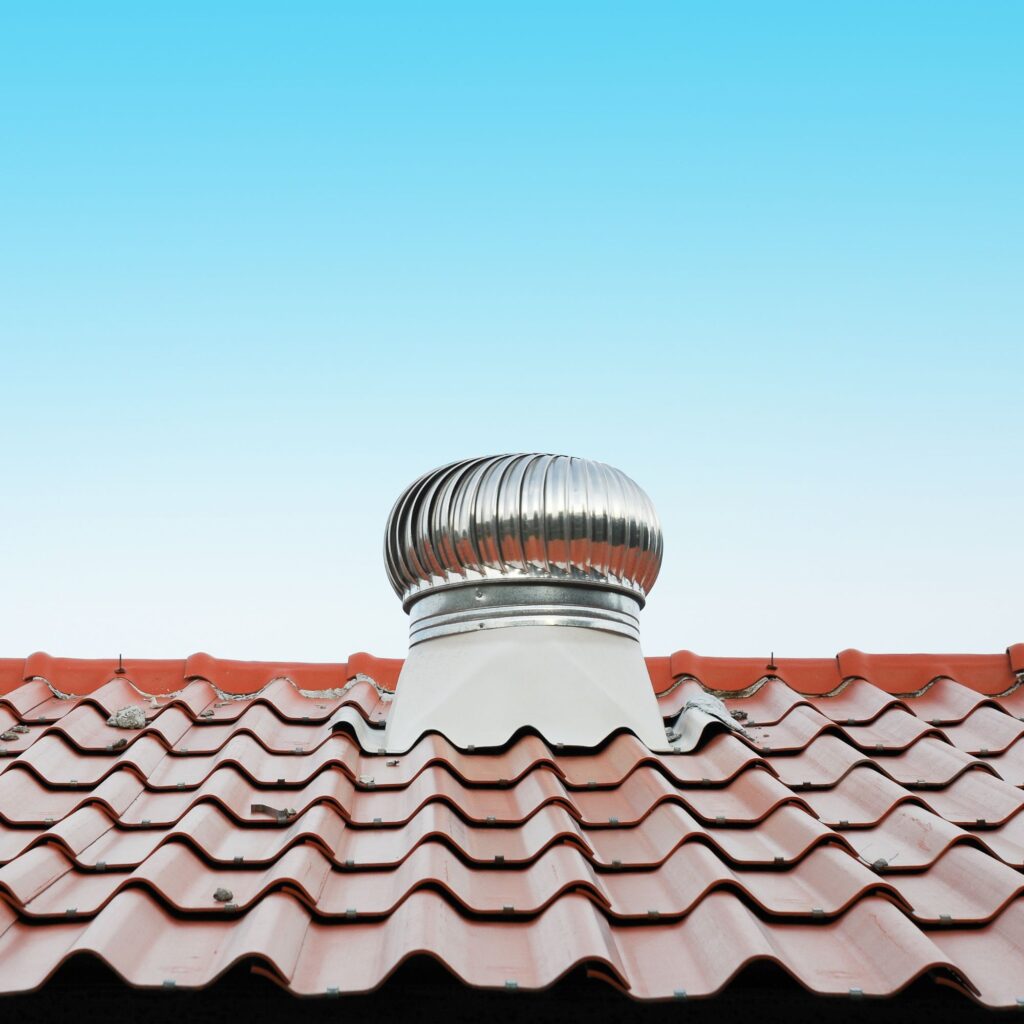
Why are roof vents important?
The role of ventilation in roof health, particularly in preventing moisture damage, cannot be overstated. Proper ventilation helps regulate moisture levels in the attic or roof space by allowing humid air to escape. Without adequate ventilation, moisture from various sources, such as cooking, bathing, and heating systems, can accumulate in the attic. This moisture can lead to condensation, which, over time, can cause mold, mildew, and rot in the roof structure and insulation.
Roof vents also help prevent ice dams. In colder climates, inadequate ventilation can contribute to the formation of ice dams on the roof. Ice dams happen when warm air from the living space heats the underside of the roof, causing snow to melt and then refreeze at the eaves. Proper ventilation helps maintain a consistent roof temperature, preventing snowmelt and reducing the risk of ice dam formation.
Ventilation promotes airflow through the attic or roof space, allowing fresh air to enter and stale air to exit. This airflow eliminates excess heat and moisture, preventing the buildup of stagnant air pockets that can contribute to moisture problems and structural damage.
More Reasons to Ventilate Your Roof
Properly ventilating your roof extends its life, as excessive moisture can accelerate the deterioration of roofing materials, leading to premature failure of the roof system. Proper ventilation helps remove moisture and reduce humidity levels, thereby extending the lifespan of the roof and its components.
By venting moisture-laden air to the exterior, we help prevent the growth of mold and mildew, which can compromise indoor air quality and pose health risks to occupants. Proper ventilation can also contribute to energy efficiency by reducing the workload on heating and cooling systems. By venting hot air from the attic in the summer and preventing heat loss in the winter, ventilation helps regulate indoor temperatures and reduce energy consumption.
Moisture damage can weaken the structural integrity of the roof, leading to sagging, rot, and decay. Adequate ventilation helps prevent moisture-related issues, preserving the integrity of the roof structure and supporting elements.
In conclusion, ventilation plays a vital role in maintaining roof health and preventing moisture damage. Homeowners should ensure that their roofing systems are properly ventilated to control humidity levels, promote airflow, and protect the roof from potential damage. Regular inspection and maintenance of ventilation systems are essential to ensure optimal performance and long-term durability of the roof.
